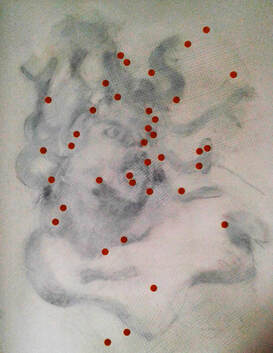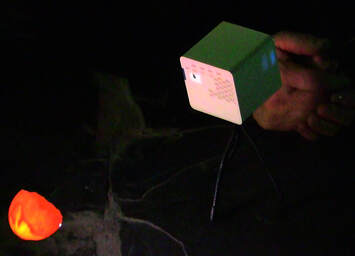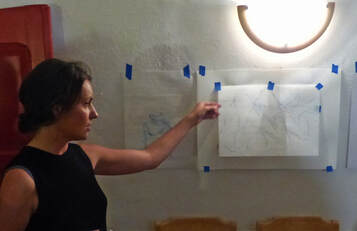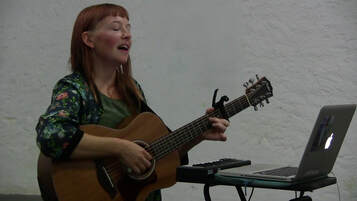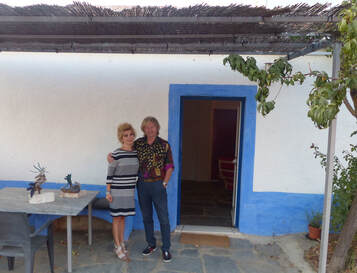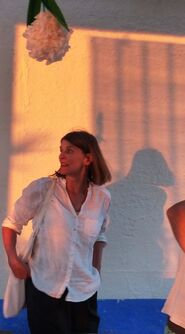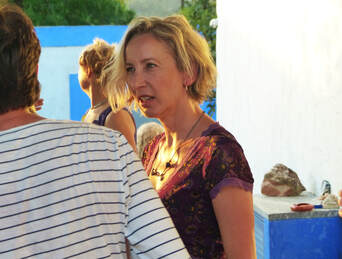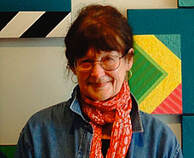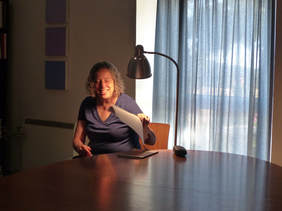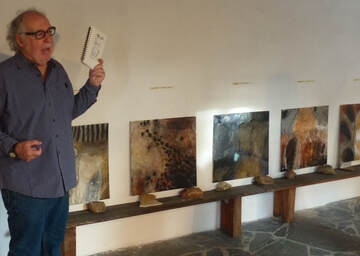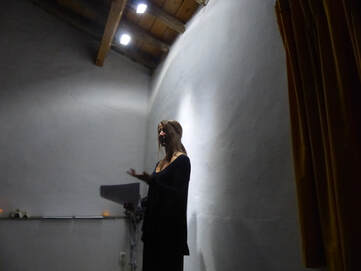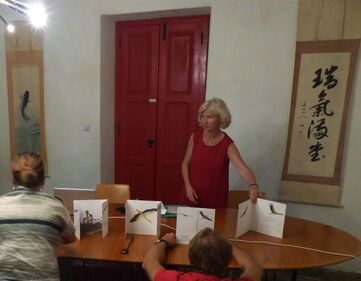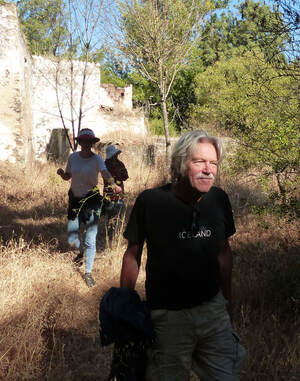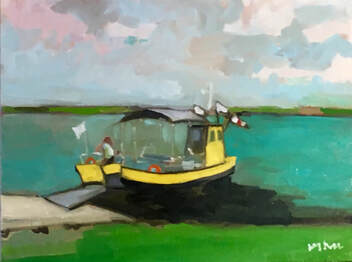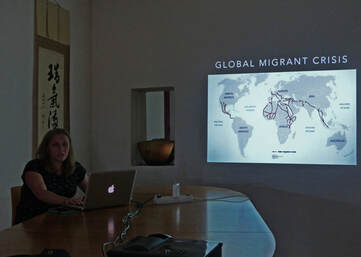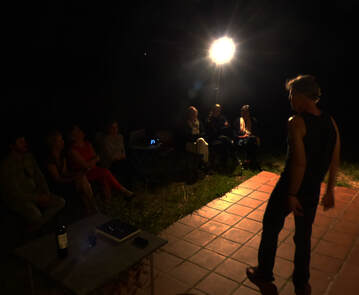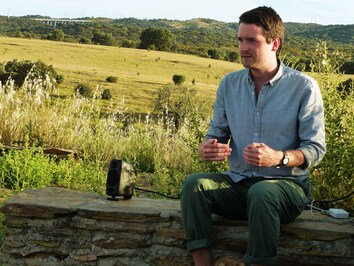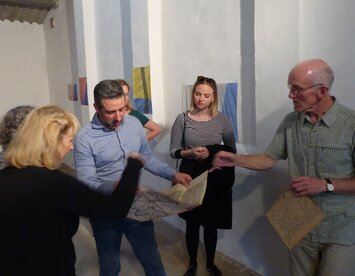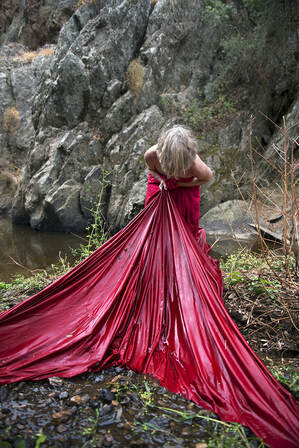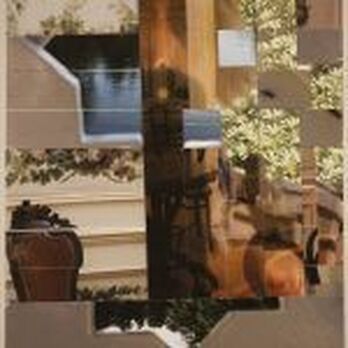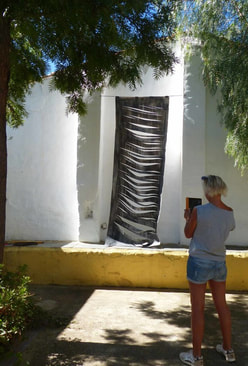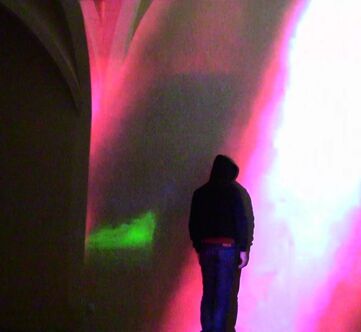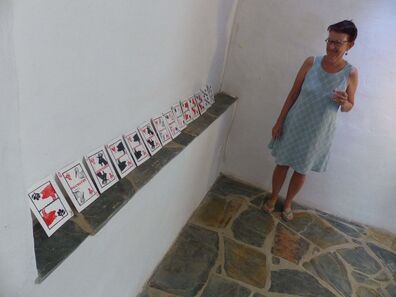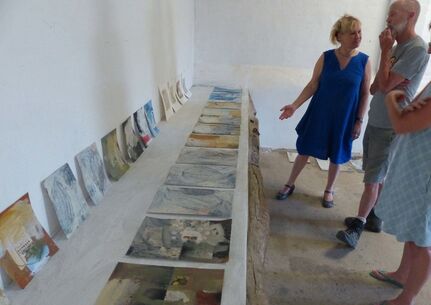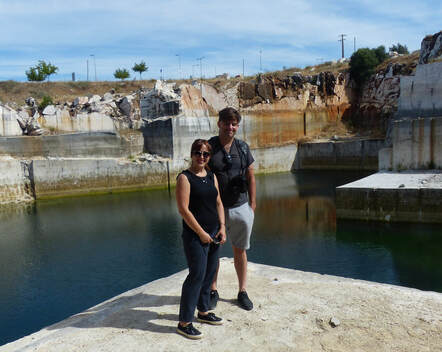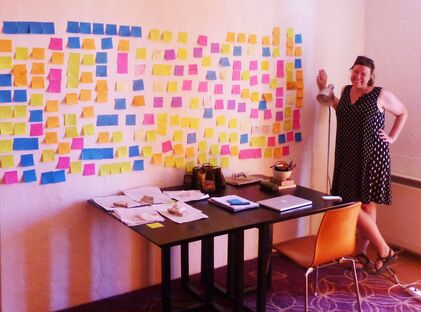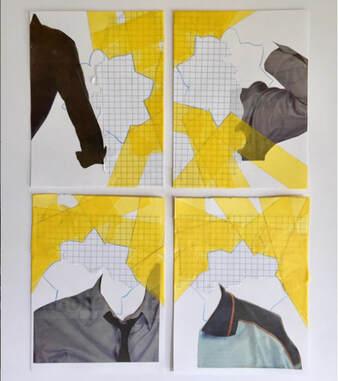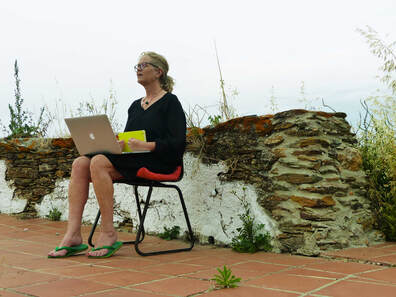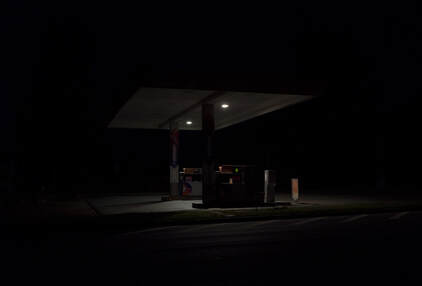Residents 2017
This page shows residents and their projects in 2017. Residencies of 2018 are mentioned on page 2018 or in the newsletter.
Other pages show residents and their projects in 2016, 2015, 2014 , 2012 and 2013 and 2004-2011.
A visual collage of residents is in this slide show.
This page shows residents and their projects in 2017. Residencies of 2018 are mentioned on page 2018 or in the newsletter.
Other pages show residents and their projects in 2016, 2015, 2014 , 2012 and 2013 and 2004-2011.
A visual collage of residents is in this slide show.
|
Sherry Wiggins (conceptual artist; USA) was at OBRAS in January for a great solo exhibition (see youtube clip) and came back in October for a photoshoot with master photographer Luis Branco (Portugal). Sherry was photographed in nature and mostly in water. The images show a strong, mythical relation with nature. They also suggest nature embracing a middle-aged woman. Some seem to tell about (re-)birth, life (excitement and reflection) and death. See below on this page for more info on her exhibition in January.
Kirsten Beets (South Africa) had a residency in OBRAS Holland, partly to feel her Dutch roots (her father´s family was from Holland), but also to study the human-nature relationship. She considered that the relation with nature in Holland must be very diffident if you live in a country so densely populated as Holland. She made a beautiful set of oil paintings.
Lucy Stuart-Clarck (South Africa) was at OBRAS-Holland to re-visit the Kröller-Muller art Museum and the national park the Hoge Veluwe. Her first visit was in 2012 and this time she decided to leave her camera home and to just take her sketchbook. She made many sketches, collages and oil paintings, and a collected lots of objects found in the surroundings. With the combination of drawings, paintings and found objects she intends making collages and installations.
Stella Whalley (UK) was deeply shocked by the fire in the Grenfell tower in London, first of all because possibly over 80 people lost their life. But also because the fire was caused by greediness of the builders who used too cheap material and because the rich neighborhood showed little compassion with the victims, who mostly were poor. Stella prepared installations that refer to this tragedy and that is being exhibited in October (Q Park level-3 Cavendish Square Oxford Circus).
Apart from this societal motivated work she also made several beautiful interventions in the landscape. See the slideshow for an impression. Matthew Manowski (USA) is a multimedia artist. He was fascinated by the ants. He built an object that refers to an ants’ nest, he painted them and he recorded their work in image and sound. Later he manipulated these video and audio info to a base for an installation in which he performed himself in a minimalistic manner. He performed three times, two times for his fellow residents and one time in public: at the opening of Kevin Morrows´ exhibition. Everybody was astonished by the artistic quality and originally of his work. See his slideshow below.
Mirjam Slaats (Holland) is fascinated by the ecstatic of “blobs”: solidified melts of plastic being half-fabricates of plastic recycling. She brought a suitcase full and experimented with them. She made small installations, sprayed them with gold paint or laid them in oyster shells. One piece had the size and form of a heart. She went with is to the farmers market in Estremoz, approached elderly people with the text in Portuguese ”I lend you my heart, please give me your smile” and of those who accepted she made a beautiful photos while smiling and embracing the heart.
But by far the most exciting project emerged by a collaboration with Robert Moganham. Robert was exploring underwater photography in the lakes of marble quarries and took some blobs of Mirjam. The photos and videos are surrealistic and abstract. Together they optimised the artistic quality and made plans for future collaboration and future exhibitions. Sara Tolman (USA) is a print-maker. With lino-print she made a set of X-sized playing cards, with all images referring to the region: the king was represented by the Iberian pig, the queen by a stork, hearts was a bunch of grapes, spades became some olives and so on.
Kevin Tolman (USA) created some forty works, partly collage, partly painting. Although abstract, many had hints of Portugal: a piece of a newspaper, a part of a super market flyer or the abundant application of Alentejo Azul.
Sara and Kevin had a six-weeks residency. First they participated in the regular residency program and later they took the responsibility for the house, allowing Ludger and Carolien to have holidays. Acting as landlords in July is a challenge, especially because the garden needs careful attention due to the heat. But being early birds (6am) they enjoyed the fresh mornings and evenings and were highly productive in the afternoon in their relatively cool studios. By keeping the garden green, an additional challenge was that all the rabbits of the region decided to come and pay Kevin and Sara a visit and to enjoy the pumpkins and strawberries. Anna Ortiz (USA) is inspired by destructed landscapes that are recovering, either by human action or by nature. Twice she was resident at OBRAS-Holland (where she was inspired by the Dutch recovery after World War II) and this time she choose for Portugal. She was especially interested in the abandoned marble quarries. In a way it reminded her to the ruins of Mexican temples and this relation may well become the subject of her next exhibition in Brooklyn.
Cody Conelly (USA) was working on a movie about the years that his grandmother was working as a nurse in the army during Word War II. Quite a challenge because he has to condense hours of footage, the interviews with her were tough (she is convinced that there is little to say) and making a documentary is new for him. But knowing the quality of his animation movies (for instance Glitch Noir, which he largely made in OBRAS-Holland) it will certainly become a beautiful product. Another discipline that Cody is exploring is to build 3D installations on which he projects videos specifically made to fit in the form of the installation Rachel Haley Himmelheber (USA) worked on “America´s Chickens”, a novel that combines fiction and nonfiction, and tells in counter-factual narratives about America during Obama´s presidency. The father of Edward Snowdon, the daughter of a San Bernardino terrorist, the governor of Wisconsin and many more persons are featuring, some in serious, others hilarious stories. It was impressive to see her collecting and structuring loads of factual information, visions and brainwaves. As a side activity she wrote an erotic short story, fiction, with Hilary Clinton in the main role.
Sarah Pedlow (USA) came to OBRAS-Holland for her project on traditional costumes. She visited many museums and the few villages where women still dress in traditional costumes. In one village she was lucky enough to be guided by a young local football player to visit three women who dress in costume. She also attended a seminar on Dutch fashion and National Identity held at the Free University in Amsterdam.
In addition Sarah designed sleeves and hats (based on the traditions that she studied) and a laundry pole, and made a series of mixed media collages. Marja Sterck (Holland) made photos of the twilight and light in the dark. She made several series of photos in postcard format, serene and intriguing in the same time: night skies with some lightning far away: are they dreamy or spooky? Some circular lines in the dark: is this fake or real?
Marja also used her residency to work on a new artist statement, which step-wise became an overall concept of how she approaches art, how she collects and select input for her art and especially what her very personal drivers are. Duncan Hill (USA) came to make photos of night scenes on urban spots. He made a lot, all of them a public space with no humans and mostly lightened by only one or two street lamps. He was excited about the differences in color spectrum of urban night light between the USA and Europe: in the USA public space is generally lightened blueish white, while in Portugal it is still mostly with whitish orange.
In the Summer of 2018 Duncan was participating in an exhibition in Ponte de Lima (North Portugal) with a mysterious photo of the petrol station of Estremoz at night. We organised an exhibition for Sherry Wiggins in collaboration with Luís Branco. Its title:
Reencontrando-a means Meeting her again. A beautiful impression is made by GMT produçoes. Sherry Wiggins came to Portugal -inspired by the Portuguese conceptual artist Helena Almeida. For Reencontrando-a Sherry used her own body covered with red, black and white fabric, in photographs that unite elements of drawing, installation and performance. She did shootings and is currently still doing it, both in the studio and in the landscape of Alentejo. For these works she collaborates with the Portuguese photographer Luis Filipe Branco. Her work recalls classic characters in mythology and fairy tale, reflecting universal concerns in contemporary terms in a mystic, primordial landscape. More specifically for Reencontrando-a Sherry found a profound connection to the archetypal / mythical feminine in the environment near Evoramonte. In her own words: “Here she meets her Self again, merging with other Selves that are buried deep within her psyche, and indeed, within the souls of all women”. The opening became a beautiful event because of the enthusiasm of the visitors for the exhibition, but also because of the warm words of the US embassy delegates, the city councilor of Culture, the museum director and Sherry, and because of the short concert by Marina Ferreira on saxophone. The exhibition got a follow up in Denver, USA and in Hangar, an art centre in Lisbon, Portugal. With the exhibition: De Longe e de Perto, Jacobien De Rooij expressed her attraction to numerous details in both the natural and rural landscape that lack pretention, but show an incredible beauty: a lonely sheep, a hub of marble waste, a chicken in a cage waiting to be sold. During her annual art residencies in the past six years she started a series of X-large sized drawings (up to 5 x 2 m), some ten of which are now shown in the Palácio dos Marqueses da Praia e Monforte, in Estremoz. The work of De Rooij is a proposal to look in multiple ways at the world that surrounds us. An important driving force behind her work is the concept of time. The slideshow and YouTube video give impressions of the building up, the exhibits and the opening event with a musical contribution by Daniel Catarino. On the occasion of this exhibition, Marja Sonneveld made a beautiful portrait of Jacobien the Rooij and her way of working. |
